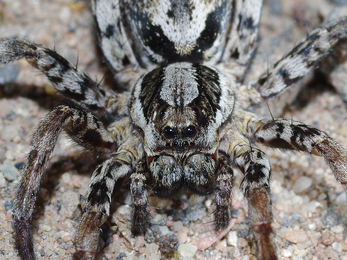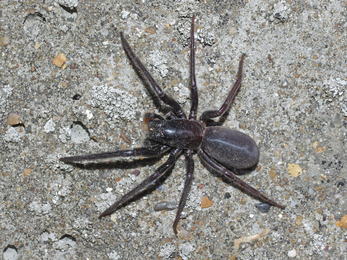Size isn’t everything…
It is a good few years now (around eight?) since I really got stuck into my present interest in spiders. Surrey is the spider-capital of the UK, so I’ve now managed to find and identify a significant proportion of the British list, which currently stands at around 670 species. Surrey hosts about 63% of them, mainly down to our lowland heathlands which are a spider-paradise.
Fangs to spinners, the bodies of the largest British spiders are around 20mm (including the great fox, which I re-discovered in 2020). Other contenders for the largest are the grey bear-spider of river-shingle shorelines north of Yorkshire and in Wales, and the green-fanged tube-web of maritime urban built-heritage structures, in London and along the south coast.
But a huge majority are a mere couple of millimetres in length at best, including most of the largest family – the Linyphiidae or ‘money-spiders’. To study these, it often feels one is entering Marvel’s quantum realm. It takes digital microscopes and high-magnification hand-lenses to reveal them. Anyone who knows anything about spider taxonomy is aware that the mature, adult reproductive structures are the clinching diagnostic features. The size of these on a 1mm-long spider – well, you see my point…
Collecting, or sampling, spiders is greatly enhanced by use of a D-Vac system, which is really a leaf-blower stuck in reverse. It sucks tiny insects into a collection bag or sieve. It is only as one upgrades to the D-Vac that the full enormity of species at the smaller end of the spider size-spectrum is revealed. Which in turn generates a shedload more lab-work, of course.
The excitement to be found at the end of a microscope must not be under-estimated. Many of the males of the smallest money-spiders are equipped with truly bizarre carapaces (the head and thorax combined in spiders), with the anterior (front) head area contorted into extraordinary structures that bear their eyes on towering pillars, elevated plateaux, and other weird bulbosities. Why money-spiders have these features, apart from to improve their visibility, is anyone’s guess.



